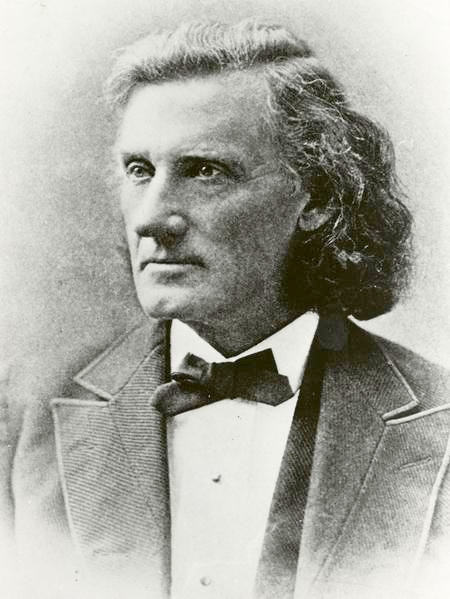John Farnham Boynton
(1811-1890)


By Susan Easton Black
John was schooled at Columbia University in New York City before entering medical school in St. Louis. His scholastic opportunities and success far outstripped most of his contemporaries. His willingness to accept the message of the Restoration and baptism by the Prophet Joseph Smith evidenced his desire to become a disciple of Christ.
At age 21 John was ordained an elder and called to serve a mission in the Eastern States and Canada. On January 20, 1834 in Saco, Maine, John wrote to Oliver Cowdery, “I have baptized about forty in this section, and there are more convinced of the truth, but are still lingering on the threshold of the Church. Brethren, pray for me, that I may have words of wisdom.”1 Prayers were answered as he baptized more converts in New England.
In February 1835 at age 23 John was ordained a member of the Quorum of the Twelve Apostle. When Oliver Cowdery asked him, “Will you with full purpose of heart take part in this ministry, to proclaim the Gospel with all diligence, with these your brethren, according to the tenor and intent of the charge you have received,” John answered in the affirmative.2
John was faithful in carrying out his assignments in the Quorum of the Twelve until 1837. In that year Heber C. Kimball reported, “Two of the Twelve, Lyman E. Johnson and John F. Boynton went to New York and purchased the amount of $20,000 worth of goods, and entered into the mercantile business, borrowing considerable money.”3 Clinging to profitable gains, John feigned losses in the speculative venture and blamed his losses on the failure of the Kirtland Safety Society bank. According to Aroet Hale, “The Prophet Joseph Smith called on him for money. He had the money but refused. This was a turning point in his life.”4
At a September 3, 1837 general conference, John attempted to justify himself in his former conduct by reason of failure of the bank. He was dismissed from the Twelve. A week later, he admitted his failings and was reinstated in the Quorum. Within a few months his complaints against the leadership of Joseph Smith and his uniting with apostates to forcefully take possession of the Kirtland Temple led to his April 12, 1838 excommunication.
An angry John Boynton turned his time and talents away from religion to science, promoting himself as a scientific lecturer. As such, he traveled throughout the United States and became quite famous for his scientific inventions—fire extinguisher, soda fountain, vacuum process method for extracting gold from ore, small electrical appliances, and a method for coloring glassware. He also gained notoriety as a novice genealogist as he gathered and preserved Boynton family history.
After a brief illness, John died at his home in October 1890 in Syracuse, New York at age 79. Those at his bedside reported that he was “not depressed at the thought of death and with his characteristic zeal in the cause of science he expressed a willingness to have his body examined before the students of the Medical college to determine the cause of death.”5
1. “John F. Boynton to Oliver Cowdery, January 20, 1834,” Evening and Morning Star 2, no. 17 (February 1834), p 134.
2. Minutes and Blessings, 21 February 1835, p. 164. Joseph Smith Papers.
3. Journal of Heber C. Kimball, as cited in Orson F. Whitney, Life of Heber C. Kimball (Salt Lake City: Bookcraft, 1967), p. 99.
4. Journal of Aroet Lucious Hale, typescript. p. 3. L. Tom Perry Special Collections, Harold B. Lee Library, Brigham Young University, Provo, UT.
5. “John Farnham Boynton, Death of this Brilliant and Versatile Man,” Syracuse (NY) Evening Herald 14 (October 20, 1890), pp. 1-2.
Additional Resources
- Biography of John Farnham Boynton (josephsmithpapers.org)
